VITO ACCONCI
Acconci’s work is situated at the crossroads of ideas. His work method is closely allied to ’action research’: a method in which the researcher intervenes in the chosen topic, a technique the German-American pioneer in social psychology Kurt Lewin defined in 1946 as "a comparative research on the conditions and effects of various forms of social action and research leading to social action". The ’dramaturgic metaphor’ of the sociologist Erving Goffman – in which he compared human communication across the world to a theatre in which everyone, according to the situation, always dressed for a different role – echoes through the different positions the artist adopts in his career (and, seen at a micro-level, not rarely in one and the same work). The rise of so-called ’anti-psychiatry’ in the 1960s (a label that many mainstream researchers would reject) also strongly influenced Acconci in his thinking and activities. Above all, Ronald David Laing’s work on psychosis and the importance granted to the role of the individual (i.e. the patient) inspire Acconci’s work. A quote from Laing’s standard work ’The Divided Self: An Existential Study in Sanity and Madness’, which appeared in 1959, addresses the core idea which Acconci’s conceptual performance practice revolves around: "The body is felt more as an object among other objects in the world than as the core of the individual’s own being." In a strict literary sense a reference can be made to William Faulkner, with his uninterrupted associative word streams, or to Samuel Beckett’s monologues. Acconci initially studied literature and stumbled into the world of art along the way. In the mid-1960s, having begun as a writer and poet, he presented a white piece of paper as a container for ideas, as a place or a structure in which he and the reader can act freely, can have a dialogue. Instead of writing a fictional character, Acconci impelled and influenced a real person – the reader – in his poetry. With the typographic possibilities of the typewriter, amongst other things, having been exhausted by this time, the blank page becomes a space which the reader can navigate. Letters, words, numbers, punctuation and white space aim to convey movement, playfulness and confusion; they function as signposts, obstacles, commandments and prohibitions. In this way Acconci uses language as a catalyst: he presents communication as a field of tension in flux in which bonds (and disturbance factors) between sender, message and recipient exist as an interactive process. Their problematic relationship is necessary; it forms the premise for the existence of a work. In the late 1960s Acconci opens up the space embodied by a page by applying his own body to it. The gallery, his own home, urban and media space serve as laboratories for performances that he documents and analyses in sound works, photos, films and videos. His video art is directed at defining this new medium in a manner that discusses, stretches and undermines the classic Latin meaning of the word ’video’ (’I see’). Between 1969 and 1974, he completed more than 200 conceptually structured works that, however simple in terms of set-up, again seek a direct psychological confrontation with the viewer. In his conceptual, performance-based videos and audio works, Acconci executes an intense dialogue between his body and psyche, the ’I’ and the ’you’, the public and private space, in the form of stream-of-consciousness monologues. He plagues the viewer, holds him or her on edge, challenges them to look, to stay looking or to go away. By constantly changing his bodily position from video to video, the artist puts himself in close-up in works such as ’Command Performance’, ’Theme Song’, ’Turn on’ and ’Face Off’. From the perspective of the viewer he rubs the screen, challenging the neutrality of the medium. The idea of the monitor as something that enables a one-to-one relationship with the viewer is an essential basis of this work. The intimate proximity and complicity between artist and viewer commanded by the monitor can also be seen here as the reverse of the one-to-all broadcasting scheme, the false rhetoric of the window on the world and the ideological domestication for which the mass media is responsible. With his 90-minute magnum opus ’The Red Tapes’ in 1977, the very last video work from this fruitful period, Acconci leaves the monitor scheme. In this epic cross-section of American culture – conceived for video projection – the close-up of the video space alternates with the landscape belonging to the film space. More than three decades later this (self-)reflective and vociferous oeuvre, slicing through modernism and post-modernism, has lost none of its force. From the 1980s onwards Acconci’s practice shifted in the direction of sculptural interventions and urban projects, progressing his interest in the human body and its relation to the public space. His architectural games of the early 1980s created performative spaces for viewers, whose participation resulted in the construction and deconstruction of house prototypes. In 1988 he founded the Acconci Studio, an architectural practice involving architects and artists, treating architecture as an opportunity for activity and making spaces fluid, changeable and portable.
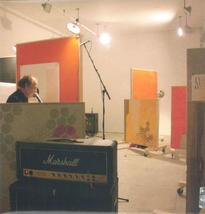
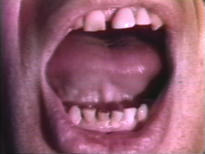
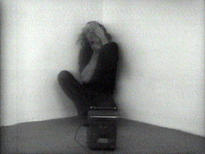
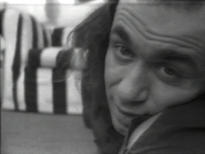
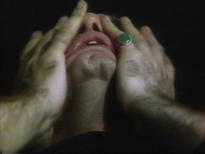
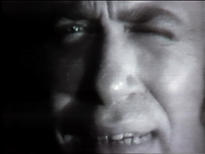
- ° 1940 Bronx, New York (United States). Lives and works in Brooklyn.
- † 2017 Manhattan, New York (United States).
-
Links
-
EVENEMENTEN
-
At view in the media library
WERKEN